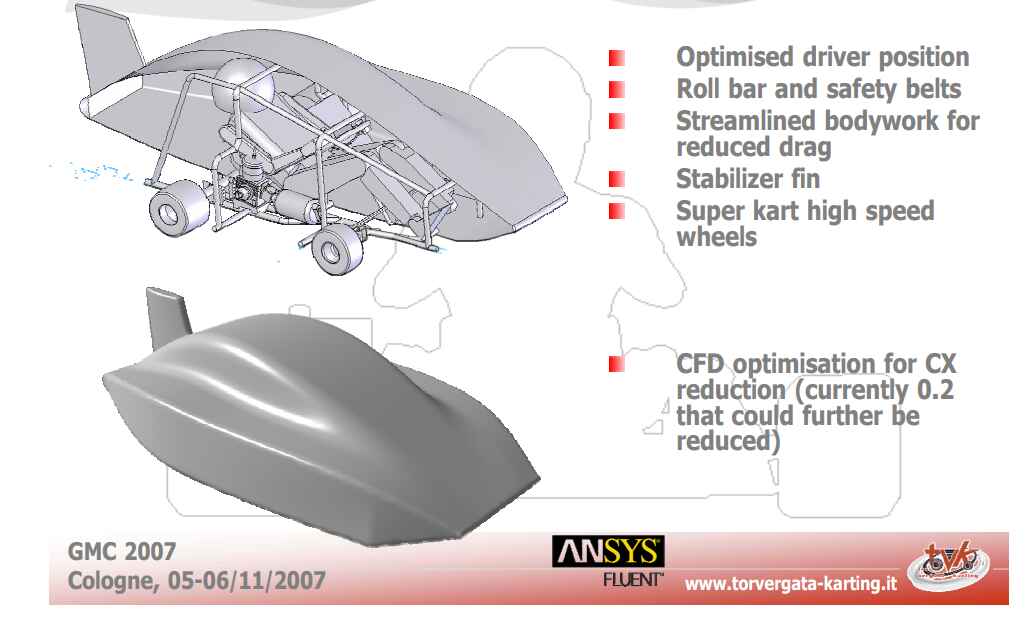The Tillett T9.5t is what I’m going to start using. I’m just too tall at 6’ and fairly long torso.
I see the seat but no one seems to have the seat for sale.
Anybody have a model of a kart with a driver in it? I could run it through a CFD program. Currently taking a CFD class so I thought it could be helpful
There are several on grabcad. I’m slowly putting one together in freecad, but it’s not there yet.
To do this quick and dirty I highly recommend using photogrammetry. The hard part for me is crunching data like 2-3 weeks.
This is an older topic, but might be of use to those that have not read it already. It includes a coast down test and some CFD work… on older bodywork types.
Unfortunately I don’t have any equipment for that
What about a cell phone?
There are some Ansys analysis on older bodywork but nothing on the new stuff. The CIK and all major brands have extensive CFD testing I am sure
I’ll take a look at that. My kart is up in NH right now but when I get time I’ll try it out
No worries. No one will see it but us…
Your challenge will be finding a good accurate model of the bodywork. Find a person, with a helmet in a seated position isn’t too hard.
Do CFD programs create designs yet for you (like CAD /CAE does for 3d printing scenarios). I used ANSYS at uni and it was a little simple in the application i was using it.
Am I missing something here?
Take pods off… add some lead to off-set weight difference … do some laps
Put pods back on … remove lead … do some laps
repeat a couple times. check data.
Surely this is the least complicated way to get a baseline performance differential (really seeing if there is one at all. There may some side effects from a handling perspective but data is still gonna be pretty informative) before working in a simulated environment?
You can’t beat real world data.
Im not sure hwat you mean by does CFD create designs. I can import 3d models or create 3D models in autodesk inventor than import it into autodesk CFD to analyze it. Im not sure if it can actually calculate downforce on a complex object, I may need a different program.
Oh yeah no problem. I should of give its correct nomenclature, ‘generative design’. Copied from Wikipedia lol:
“Generative design is an iterative design process that involves a program that will generate a certain number of outputs that meet certain constraints, and a designer that will fine tune the feasible region by selecting specific output or changing input values, ranges and distribution.”
So in CAD/CAE, you contrain your design and the software gives you a design. Thats how you end up with funky designs like this, with the first one being a typical design by an engineer and the revisions as the software takes different runs at it:

So for structural designs, it allows you to design something that meets the need but is much lighter. I didn’t know if CFD had started doing that yet. So tell the software what you want the output to be (low drag for example) but some contraints (like size and ability to handle an impact etc) and it will output the most efficient design automatically.
ohhh I get what youre saying now. Ive never used AI like that before but I could try. Restricing it and creating constraints may be beyond my ability for something as complicated as a kart fender. I can try to see if its available but Im probably going to end up with something that no longer looks anything like a kart
Which ANSYS software did you use? There are many options in terms of CFD. Not sure which one would be best for calculating drag and downforce. seems a little overkill for what I want
A tall driver with big feat is at less of disadvantage with bodywork that can spike (Conical effect) the air prior to hitting his feet/helmet. ( Cough M7 ) or a Wide Driver is at less of a disadvantage if you can push more of that air around the driver ( Cough Dynamica ) then if it was bodywork that didn’t push air around the driver. On your average 5ft 8inch 140lbs Karter your not going to see the same kind of gains.
What would you define as tall or wide? I was looking at updating my old worn bodywork and had been looking at the Dynamica but your comment now has me wondering if the M7 would actually make more sense for me.
FWIW, I can say that I felt a noticeable difference in the amount of wind hitting my torso with the Dynamica vs my current fairing. Cant compare times however since it was a different kart.
Does anyone have a model of a current bodywork style kart? even better if it includes a driver. Otherwise I’ll have to figure out how to do that photo thing and travel up to NH. I think Im going to use autodesk CFD because I get it free as a student. (normally $9,000!!!)
